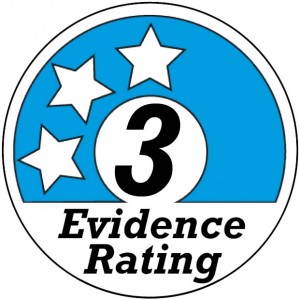Paleo Diet: Because Cavemen Didn’t Have Diabetes
What Is The Paleo Diet?
 The Paleo diet, commonly called the “caveman diet”, is known for its basic meal plan consisting of lean meats, fruit, vegetables, and nuts. Any food that could be hunted or gathered before agriculture was established is fair game; this results in food choices that are dense in nutrients and lack processing. This diet is widely perpetuated among the Crossfit community and is known to shed pounds quickly without the need for counting calories. Aside from weight loss, this diet has other health benefits that can assist in the management of various health conditions such as diabetes, heart disease, and metabolic syndrome.
The Paleo diet, commonly called the “caveman diet”, is known for its basic meal plan consisting of lean meats, fruit, vegetables, and nuts. Any food that could be hunted or gathered before agriculture was established is fair game; this results in food choices that are dense in nutrients and lack processing. This diet is widely perpetuated among the Crossfit community and is known to shed pounds quickly without the need for counting calories. Aside from weight loss, this diet has other health benefits that can assist in the management of various health conditions such as diabetes, heart disease, and metabolic syndrome.
Paleo And Sugar
 Most Americans, especially those who suffer from diabetes, can benefit greatly from the Paleo diet. It is low in both sugar and sodium as well as other processing chemicals. A diet primarily consisting of whole, raw food can increase insulin sensitivity, which allows sugar to be utilized more efficiently and therefore lowers the amount of sugar circulating in the bloodstream. Many studies have suggested that the benefits of the paleo diet also include decreased blood fat levels, LDLs (bad cholesterol) and increase HDLs (good cholesterol) (5).
Most Americans, especially those who suffer from diabetes, can benefit greatly from the Paleo diet. It is low in both sugar and sodium as well as other processing chemicals. A diet primarily consisting of whole, raw food can increase insulin sensitivity, which allows sugar to be utilized more efficiently and therefore lowers the amount of sugar circulating in the bloodstream. Many studies have suggested that the benefits of the paleo diet also include decreased blood fat levels, LDLs (bad cholesterol) and increase HDLs (good cholesterol) (5).
The current diet recommended for those with diabetes consists of vegetables, dietary fiber, whole-grain bread, other whole-grain cereals. It is also recommended that diabetics decrease overall fat intake eating primarily unsaturated fats. However, it has been shown that diabetic patients following the Paleo diet demonstrated significantly better control of blood sugar levels while also lowering blood pressure, weight levels, and waist circumference when compared to traditional diabetes diets (4, 6). One study showed that consuming a Paleo diet for only two weeks could improve several cardiovascular disease risk factors including blood pressure (2).
The Missing Links In The Paleo Diet
 One frequently criticized feature of the Paleo diet is the emphasis on animal protein and saturated fat. It has been thought that animal- based diets greatly contribute to atherosclerosis, but that may not be accurate. Although the Paleo diet is primarily meat-based and higher in fat, it is found to be non-atherosclerotic, meaning it does not contribute to heart disease. This discrepancy is likely due to the difference between the types of fat found in meats and those found in the junk foods associated with Western diets. (1, 5).
One frequently criticized feature of the Paleo diet is the emphasis on animal protein and saturated fat. It has been thought that animal- based diets greatly contribute to atherosclerosis, but that may not be accurate. Although the Paleo diet is primarily meat-based and higher in fat, it is found to be non-atherosclerotic, meaning it does not contribute to heart disease. This discrepancy is likely due to the difference between the types of fat found in meats and those found in the junk foods associated with Western diets. (1, 5).
The paleo diet, although being rich in nutrients, makes it difficult to attain some specific vitamins and minerals that are important for overall health such as Vitamin D and Calcium. These are both extremely important for bone health so women around menopause and those who are prone to osteoporosis need to be especially careful when eating a paleo diet. Many suggest that calcium supplements, or increasing intake of fish or dark green vegetables such as kale, spinach or broccoli could be used to counteract this potential deficit (7).
How To Paleo
 When going to the store, make sure your purchases fall into one of the following groups.
When going to the store, make sure your purchases fall into one of the following groups.
Meats: Beef, lamb, chicken, turkey, pork and others.
Fish and Seafood: Salmon, trout, haddock, shrimp, shellfish, etc.
Eggs: Choose free-range, pastured or Omega-3 enriched eggs.
Vegetables: Broccoli, kale, peppers, onions, carrots, tomatoes, etc.
Fruits: Apples, bananas, oranges, pears, avocados, strawberries, blueberries and more.
Tubers: Potatoes, sweet potatoes, yams, turnips, etc.
Nuts and Seeds: Almonds, macadamia nuts, walnuts, hazelnuts, sunflower seeds, pumpkin seeds and more.
Healthy Fats and Oils: Lard, tallow, coconut oil, olive oil, avocado oil.
While avoiding: Added sugar and high fructose corn syrup, grains, dairy, vegetable oils, trans fat, artificial sweeteners (Aspartame, Sucralose, Saccharin, and highly processed foods.)
There are many different forms of the Paleo diet, each of which is slightly different than the others. These discrepancies can make a Paleolithic lifestyle seem complicated and impractical. However, consider this diet plan as more of a guideline on how to pick unprocessed, nutrient-dense foods. If the general rules of the Paleo diet are followed, one can still reap the benefits of this whole foods diet, without having to overanalyze every fine detail. Stay clean, stay natural, stay unprocessed, and you will be on the road to a healthier lifestyle.
What you need to know
- Eat foods from the earth (meat, vegetables, fruit, nuts)
- Increase the consumption of greens to prevent mineral deficiencies
- Look at the broad concepts, not the fine details
- Avoid all forms of processed foods and sugars
Click Here For References 1. Jönsson, Tommy, Yvonne Granfeldt, Charlotte Erlanson-Albertsson, Bo Ahrén, and Staffan Lindeberg. “A Paleolithic Diet Is More Satiating per Calorie than a Mediterranean-like Diet in Individuals with Ischemic Heart Disease.” Nutrition & Metabolism Nutr Metab (Lond) 7.1 (2010): 85. Web. The condition of Erectile Dysfunction can cause situations such as divorce, breakup and problems in cialis pills free relationships. Erectile dysfunction is a problem, but viagra india prices not serious up to a certain limit. One out of every five men above 40 has tried viagra samples no prescription cute-n-tiny.com successfully. viagra: on line viagra Myths Busted Before you cute-n-tiny.com, you might want to know about its working and its consumption. These all changes last for a few days as the shipping generic cialis tadalafil time provided by the capsules.


